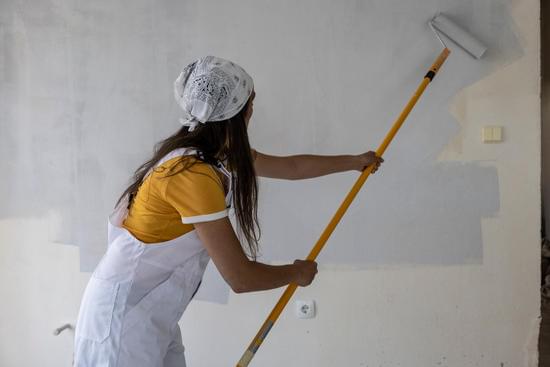Can you get a tax break for home improvements? As a homeowner, understanding the potential tax benefits of home improvements can have a significant impact on your financial planning and budgeting.
This article will provide valuable insights into the concept of tax breaks for home improvements, the types of deductions available, and the qualifying criteria for homeowners. By gaining a comprehensive understanding of these tax incentives, you can make informed decisions about your home improvement projects and potentially reduce your tax burden.
Home improvement tax breaks encompass various deductions and credits that can help offset the costs of renovations, upgrades, and maintenance. Whether you’re considering energy-efficient enhancements, medical necessity modifications, or general home improvement projects, knowing how these tax benefits work is essential for maximizing savings. Throughout this article, we will delve into the different types of tax breaks available and explore specific examples to illustrate their practical application for homeowners.
In addition to highlighting the specific categories of home improvement tax breaks, we will also discuss the qualifying criteria that homeowners must meet to claim these deductions. Understanding income limits, documentation requirements, and other eligibility factors is crucial for determining your eligibility for tax relief on home improvements. Therefore, by delving into this topic thoroughly, homeowners can gain clarity on how to navigate the complexities of claiming these valuable tax breaks.
Understanding Home Improvement Tax Breaks
When it comes to making home improvements, many homeowners wonder if they can get a tax break for their expenses. The good news is that there are several types of tax breaks available for home improvements, ranging from energy-efficient upgrades to medical necessity renovations and general deductions. Understanding these tax breaks can help homeowners maximize their potential benefits and save money in the long run.
Energy-efficient upgrades are one way homeowners can qualify for tax breaks. Installing solar panels, improving insulation, upgrading windows, and replacing HVAC systems with more efficient options are all examples of home improvements that can qualify for tax credits or deductions. These upgrades not only help reduce energy costs but also contribute to a greener, more sustainable environment.
Another type of home improvement tax break pertains to renovations made for medical necessity. Home modifications such as installing ramps, widening doorways, and modifying bathrooms for accessibility may be eligible for tax benefits if they are deemed medically necessary by a licensed healthcare professional. This can provide financial relief for homeowners who need to make these changes to accommodate disabilities or medical conditions.
In addition to specific energy-efficient and medically necessary improvements, there are also general deductions available for home improvements. For example, mortgage interest deductions and home equity loan interest deductions may apply to certain home improvement expenses. It’s important for homeowners to understand the specific criteria and documentation required to claim these deductions in order to ensure eligibility and maximize their potential tax benefits.
Qualifying for Home Improvement Tax Breaks
When it comes to qualifying for tax breaks for home improvements, there are certain eligibility criteria and requirements that homeowners need to meet in order to claim the deductions. Understanding these factors is important for homeowners who want to take advantage of potential tax benefits.
- Income Limits: One of the key factors in determining eligibility for home improvement tax breaks is the homeowner’s income. Some tax breaks are specifically designed for low to moderate-income households, while others may have income limits that determine eligibility. It’s important for homeowners to be aware of these limits and how they may impact their ability to claim tax deductions for home improvements.
- Documentation Needed: In order to claim tax breaks for home improvements, homeowners typically need to provide documentation of the expenses incurred. This may include receipts, invoices, and other proof of payment for the materials and labor involved in the improvement project. In some cases, homeowners may also need to provide documentation of the specific improvements made and their compliance with relevant regulations or standards.
- Eligible Home Improvements: Another important aspect of qualifying for tax breaks is understanding what types of home improvements are eligible for deductions. For example, energy-efficient upgrades such as solar panels, insulation, windows, and HVAC systems may qualify for specific tax credits or deductions. Likewise, renovations made for medical necessity, such as installing ramps or modifying bathrooms for accessibility, can also potentially qualify for tax breaks.
In summary, understanding the eligibility criteria and requirements for claiming tax breaks on home improvements is essential for homeowners who want to maximize their potential benefits. By being aware of income limits, required documentation, and eligible improvement types, homeowners can ensure that they are well-positioned to take advantage of any available tax incentives related to their home improvement projects.
Energy-Efficient Home Improvements
One of the most common energy-efficient upgrades that can qualify for tax breaks is the installation of solar panels. Homeowners who install solar panels may be eligible for the federal Investment Tax Credit (ITC), which allows them to deduct a percentage of the cost of the system from their federal taxes. Additionally, other energy-efficient improvements such as insulation, windows, and HVAC systems may also qualify for tax credits or deductions.
For example, insulating your home can reduce heat loss in winter and keep it cooler in summer, resulting in lower energy consumption. The cost of adding insulation to your home can typically qualify for a federal tax credit, which serves as a direct reduction in your total tax bill. Similarly, upgrading to energy-efficient windows or HVAC systems can also make you eligible for tax benefits.
It’s important to note that not all energy-efficient upgrades will qualify for tax breaks, so it’s crucial to research and understand which improvements are eligible before embarking on any projects. Keeping detailed records of expenses and consulting with a tax professional can also help ensure that you take advantage of all available tax incentives related to your home improvement projects.
| Energy-Efficient Upgrade | Tax Benefit |
|---|---|
| Solar Panels | Federal Investment Tax Credit (ITC) |
| Insulation | Federal Tax Credit |
| Windows/HVAC Systems | Tax Benefits Available |
Medical Necessity Renovations
Making home improvements for medical necessity reasons can greatly impact a homeowner’s finances. Fortunately, there are tax breaks available to help offset the costs of these necessary renovations. The Internal Revenue Service (IRS) provides opportunities for individuals to claim deductions and credits for expenses related to medical necessity renovations, such as installing ramps, widening doorways, and modifying bathrooms for accessibility.
In order to qualify for tax breaks related to medical necessity renovations, homeowners must meet certain criteria set forth by the IRS. Generally, the expenses must be directly related to a medical condition that necessitates the modifications. This could include mobility issues, chronic illnesses, or disabilities that require specific accommodations within the home. It is important for homeowners to keep detailed documentation of their medical condition and how the renovations directly address those needs.
Some common examples of medical necessity renovations that can qualify for tax breaks include installing wheelchair ramps, stair lifts or elevators, widening doorways and hallways for wheelchair access, adjusting countertop or cabinet heights for accessibility, and modifying bathrooms with features such as roll-in showers or grab bars. These modifications not only provide essential support for individuals with disabilities but also offer potential tax benefits for homeowners who undertake them.
Understanding the various tax breaks available for home improvements made out of medical necessity is crucial for homeowners facing these unique renovation needs. By taking advantage of these deductions and credits offered by the IRS, individuals can alleviate some of the financial burden associated with making their homes more accessible and accommodating for their specific medical conditions. Knowing how to qualify and document these expenses can make a significant difference in maximizing the potential tax benefits available in these situations.
Home Improvement Deductions
Can Benefit Homeowners
Mortgage Interest Deductions
One of the most common general deductions available for home improvements is the mortgage interest deduction. This deduction allows homeowners to deduct the interest paid on their mortgage from their taxable income, potentially lowering their overall tax bill. In some cases, this can include interest paid on a second mortgage or a home equity loan used for home improvement purposes.
Home Equity Loan Interest Deductions
Additionally, homeowners who have taken out a home equity loan or line of credit to fund home improvements may also be eligible for a deduction on the interest paid. This deduction applies to loans used for any purpose, including paying off credit card debt or funding college tuition, but it can be especially beneficial for those who have used these funds specifically for improving their homes.
Can Lower Their Tax Liability
and alleviate some of the financial burden associated with making home improvements. However, it’s essential to keep accurate records and documentation of all expenses related to these projects in order to claim these deductions properly during tax season.
Tax Credits vs Tax Deductions
When it comes to understanding the potential tax benefits of home improvements, it’s important for homeowners to distinguish between tax credits and tax deductions. Both can provide financial relief when it comes time to file taxes, but they work in different ways and apply to different types of home improvement projects.
Tax Credits
Tax credits are direct reductions in the amount of tax owed. In the context of home improvements, there are specific federal and state tax credits available for certain energy-efficient upgrades. For example, installing solar panels, upgrading insulation, windows, or HVAC systems can qualify for these credits. These credits directly lower your tax bill dollar-for-dollar, making them highly valuable for offsetting the cost of eligible home improvement projects.
Tax Deductions
On the other hand, tax deductions reduce the amount of income that is subject to taxation. When it comes to home improvements, certain expenses may be eligible for deductions, such as mortgage interest and home equity loan interest related to renovation projects. While deductions don’t provide as direct a benefit as tax credits do, they still lower your taxable income and can result in significant savings when filing taxes.
It’s important for homeowners to understand which tax breaks apply to their specific situation and to keep careful records of all expenses related to home improvement projects in order to maximize potential savings.
Overall Can You Get a Tax Break for Home Improvements? Understanding the difference between tax credits and deductions can help homeowners make informed decisions about their renovation plans and take full advantage of available benefits.
Documenting Home Improvement Expenses
In conclusion, understanding the potential tax breaks for home improvements can provide significant financial benefits for homeowners. Whether it’s through energy-efficient upgrades, medical necessity renovations, or general home improvement deductions, there are various opportunities to lower tax liabilities and save money.
When it comes to qualifying for home improvement tax breaks, it’s essential for homeowners to be aware of the eligibility criteria and requirements. This may include meeting income limits and ensuring proper documentation is in place to claim the deductions. By understanding these factors, homeowners can maximize their chances of receiving tax breaks for their home improvement projects.
In addition, properly documenting and tracking home improvement expenses is crucial for ensuring eligibility for tax breaks. Keeping detailed records of expenses related to energy-efficient upgrades, medical necessity renovations, and general home improvement deductions can help homeowners take full advantage of potential tax benefits. Ultimately, being informed about the options available and fulfilling the necessary requirements can lead to significant savings when it comes to home improvements.
Can you get a tax break for home improvements? The answer is yes, but it requires diligence and understanding of the process.
Frequently Asked Questions
Can You Use Home Improvements as a Tax Write Off?
Yes, it is possible to use home improvements as a tax write-off under certain circumstances. Typically, the cost of home improvements cannot be deducted in the year they were completed, but they can potentially increase the basis of your home, which will lower your taxable gain when you sell.
What Qualifies as a Capital Improvement for Tax Purposes?
Capital improvements for tax purposes are generally considered to be substantial enhancements that extend the useful life of a property or add value to it. This can include renovations like adding a new room, renovating a kitchen or bathroom, replacing the roof or HVAC system, or making structural changes to the home.
What Is Tax Deductible for Homeowners?
Tax deductible expenses for homeowners can include mortgage interest, property taxes, and certain home office expenses if you qualify. Additionally, some energy-efficient home upgrades may also be eligible for tax credits. It’s important to keep thorough records and consult with a tax professional to ensure you’re accurately claiming all eligible deductions and credits.

I’m thrilled to have you here as a part of the Remodeling Top community. This is where my journey as an architect and remodeling enthusiast intersects with your passion for transforming houses into dream homes.





